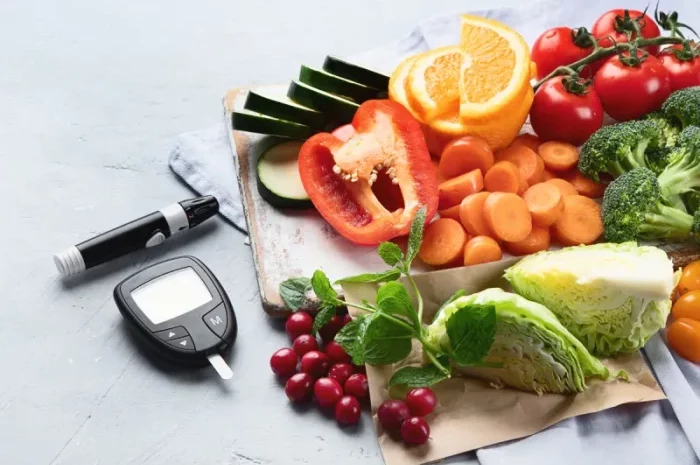Monitoring blood sugar levels is one of the cornerstones of diabetes management, playing a vital role in preventing long-term complications associated with the condition. The goal is to keep blood sugar levels within a target range that supports both immediate well-being and long-term health. This article explores what constitutes “acceptable” blood sugar readings, the factors influencing these readings, and how individuals with diabetes can manage their blood sugar effectively.
What Is Blood Sugar and Why Is It Important?
Blood sugar, or blood glucose, is the primary source of energy for the body’s cells. After eating, carbohydrates are broken down into glucose, which then enters the bloodstream. The body uses this glucose for energy, and insulin, a hormone produced by the pancreas, helps regulate the amount of glucose in the blood by facilitating its entry into the cells.
For individuals with diabetes, the ability to manage blood sugar levels is impaired. Either the body does not produce enough insulin or cannot effectively use the insulin it produces, leading to elevated levels of glucose in the blood, which can result in hyperglycemia. Conversely, low levels of glucose in the blood, or hypoglycemia, can also occur, which can be dangerous.
Understanding Blood Sugar Readings: The Basics
Blood sugar readings are typically measured in milligrams per deciliter (mg/dL) in the United States and in millimoles per liter (mmol/L) in most other countries. An individual with diabetes must aim to keep their blood glucose levels within a specific target range. The appropriate target can vary depending on factors such as age, the duration of diabetes, existing complications, and other health considerations.
Acceptable Blood Sugar Ranges
1. Fasting Blood Sugar (FBS)
The fasting blood sugar level is measured after an overnight fast, typically 8–12 hours without eating. This measurement is crucial because it reflects how well the body is managing glucose during periods of no food intake, where insulin sensitivity should be at its peak.
Normal: 70–99 mg/dL (3.9–5.5 mmol/L)
Prediabetes (Impaired Fasting Glucose): 100–125 mg/dL (5.6–6.9 mmol/L)
Diabetes: 126 mg/dL or higher (7 mmol/L or higher)
For individuals with diabetes, maintaining fasting blood glucose between 80 and 130 mg/dL (4.4–7.2 mmol/L) is generally recommended. However, these targets may be adjusted based on individual circumstances and physician recommendations.
2. Postprandial Blood Sugar
Postprandial blood sugar refers to the glucose level measured 2 hours after eating a meal. This measurement helps to gauge how effectively the body processes glucose after eating.
Normal: Less than 140 mg/dL (7.8 mmol/L)
Prediabetes: 140–199 mg/dL (7.8–11 mmol/L)
Diabetes: 200 mg/dL or higher (11.1 mmol/L or higher)
For those with diabetes, it’s recommended that postprandial blood glucose levels remain below 180 mg/dL (10 mmol/L) within 2 hours of eating.
3. HbA1c (Glycated Hemoglobin)
HbA1c, also known as A1c, is a blood test that reflects the average blood sugar level over the past 2–3 months. It measures how much glucose has attached to hemoglobin, a protein in red blood cells. This test is often used to diagnose diabetes and assess how well diabetes is being managed over time.
Normal: Less than 5.7%
Prediabetes: 5.7%–6.4%
Diabetes: 6.5% or higher
For most adults with diabetes, the target A1c is typically below 7%. However, specific targets may vary based on individual circumstances, such as age, comorbidities, and other health factors. For example, some individuals may benefit from a slightly higher or lower A1c target.
Factors That Influence Blood Sugar Readings
Several factors can influence blood sugar readings, and understanding these can help individuals with diabetes better manage their condition:
1. Diet
The types and amounts of food consumed play a significant role in blood sugar levels. Carbohydrates have the most immediate effect on blood glucose, as they are broken down into glucose. The glycemic index (GI) of foods indicates how quickly they raise blood sugar levels, with high-GI foods causing rapid increases in blood sugar. Complex carbohydrates and fiber-rich foods tend to have a lower impact on blood glucose.
2. Physical Activity
Exercise has a direct effect on lowering blood sugar levels. Physical activity increases insulin sensitivity and allows the muscles to absorb glucose more effectively. Both aerobic exercises (like walking or cycling) and resistance training (like weight lifting) can help control blood sugar. However, exercise can also cause a temporary rise in blood glucose, particularly if it is intense or prolonged.
3. Medications
Diabetic medications, including insulin and oral medications, help regulate blood sugar levels. Insulin therapy is crucial for individuals with Type 1 diabetes and is sometimes required for Type 2 diabetes as well. Medications such as metformin, sulfonylureas, and GLP-1 receptor agonists can also help control blood glucose by improving insulin sensitivity or stimulating insulin production.
4. Stress
Chronic stress triggers the release of stress hormones such as cortisol and adrenaline, which can increase blood sugar levels. Managing stress through relaxation techniques, mindfulness, and physical activity can help prevent spikes in blood glucose.
5. Illness or Infection
When the body is fighting an illness or infection, blood sugar levels can rise due to increased production of stress hormones. It is essential to monitor blood sugar more frequently during illness and adjust medications as needed under the guidance of a healthcare provider.
Why Maintaining Target Blood Sugar Is Important
Keeping blood sugar within an acceptable range is essential for preventing both short-term and long-term complications. Short-term complications can include symptoms such as fatigue, excessive thirst, and frequent urination. However, the most concerning issues arise from prolonged periods of poorly controlled blood sugar, which can lead to complications like:
Cardiovascular disease: High blood sugar levels contribute to the buildup of plaque in the arteries, increasing the risk of heart attack, stroke, and other cardiovascular problems.
Neuropathy: Chronic high blood sugar can damage nerves, leading to numbness, tingling, and pain, particularly in the hands and feet.
Kidney damage: Poorly controlled blood sugar can damage the kidneys over time, potentially leading to kidney disease.
Eye problems: Diabetic retinopathy is a condition where high blood sugar damages the blood vessels in the eyes, leading to vision loss.
Poor wound healing: High blood sugar impairs the body’s ability to heal wounds and fight infections, leading to slower recovery from injuries and surgeries.
On the other hand, hypoglycemia (low blood sugar) can cause symptoms such as shaking, confusion, dizziness, and even loss of consciousness. It is vital for individuals with diabetes to balance their blood sugar to prevent both hyperglycemia and hypoglycemia.
How to Manage Blood Sugar Levels
Managing blood sugar effectively involves a combination of lifestyle changes, self-monitoring, and medication. Here are a few tips for managing blood glucose:
1. Regular Monitoring
Daily blood sugar testing is essential for understanding how well your blood sugar is being controlled. Testing helps individuals adjust their diet, exercise, and medication based on real-time data. Continuous glucose monitoring (CGM) systems are also available, providing real-time readings and trends.
2. Healthy Diet Choices
Eating a balanced diet with a focus on low-GI foods, whole grains, lean proteins, and plenty of vegetables can help maintain steady blood sugar levels. Portion control is also critical to avoid spikes in blood glucose.
3. Exercise
Regular physical activity helps maintain a healthy weight and improves insulin sensitivity. Aim for at least 150 minutes of moderate aerobic activity per week, along with strength training twice a week.
4. Stress Management
Techniques such as deep breathing, yoga, meditation, and adequate sleep can help reduce stress and its impact on blood sugar.
5. Medication Adherence
Taking medications as prescribed and regularly consulting with healthcare providers for adjustments is crucial for optimal blood glucose control.
Conclusion
Maintaining acceptable blood sugar readings is essential for managing diabetes and preventing long-term complications. With a combination of regular monitoring, a healthy lifestyle, and the right medications, individuals with diabetes can keep their blood sugar levels in check and lead fulfilling, healthy lives. Regular consultations with healthcare providers are key to personalizing treatment plans and setting appropriate targets.
Related topics:



























